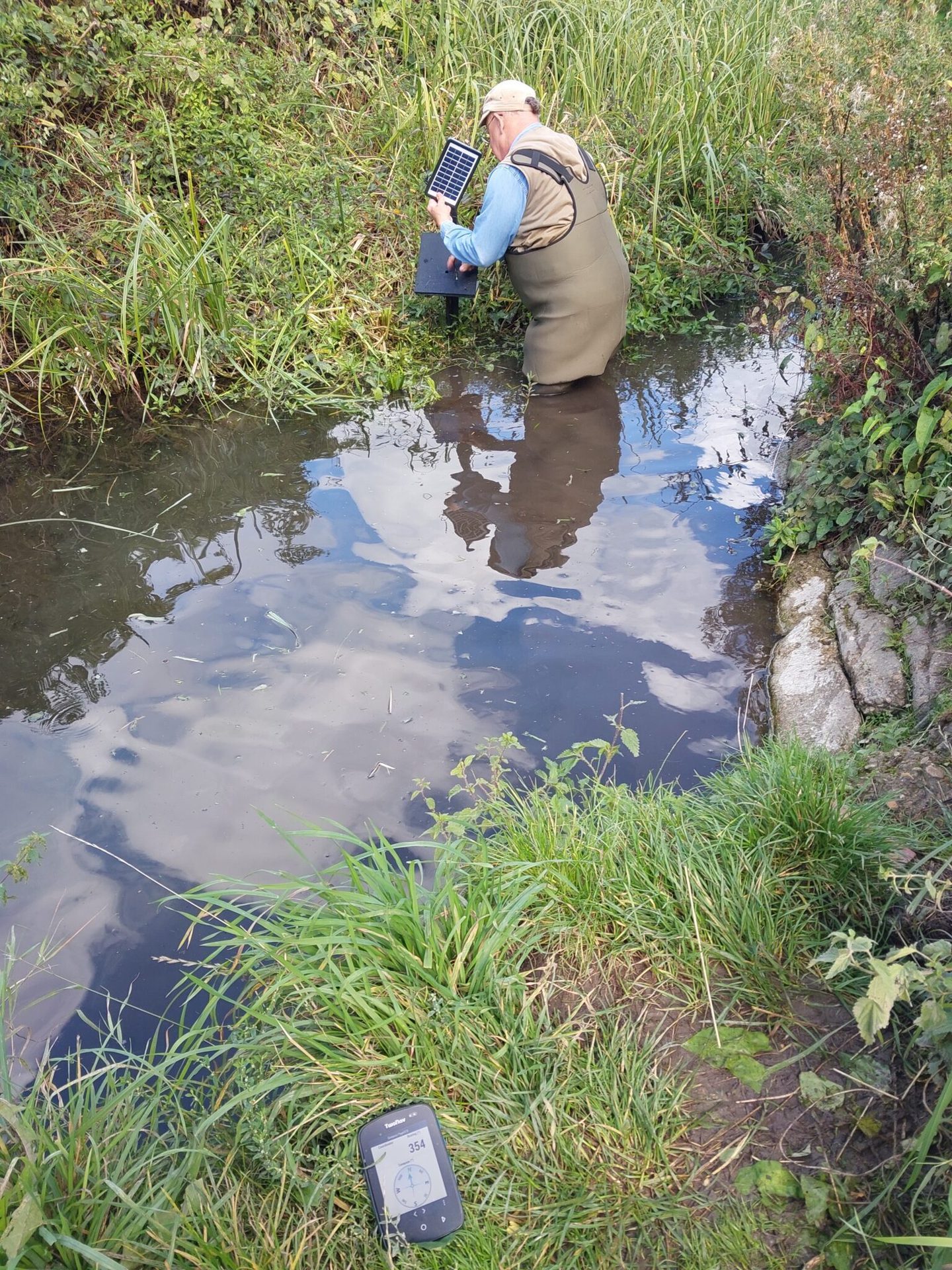Lead organisation
Partner organisations
- Cambridgeshire & Peterborough CombinedAuthority
- Cambridgeshire County Council
- South Cambs District Council
- Linton Parish Council
- Abington Parish Council
- Anglian Water
- South Staffordshire (Cambridge Water)
- Shardlowe’s Farm, Fulbourn (East Cambridge Farmers Cluster)
- Beds, Cambs & Northants Wildlife Trust
- Anglian Ruskin University
- Cam Catchment Partnership
- Hobson’s Conduit Trust
- Cambridge Nature Network
Project description
The chalk streams of Greater Cambridge are among the world’s rarest freshwater habitats, cool, mineral-rich rivers born from the chalk aquifer. Once alive with brown trout, lamprey, mayfly, and water-crowfoot, these living ribbons of clear water are now under growing pressure from abstraction, pollution, sedimentation, and urban growth.
The Greater Cambridge Chalk Stream Project (GCCSP) is transforming how we understand and restore these fragile ecosystems. Too often, restoration has relied on what can be seen on the surface — visual walkovers and aesthetic appraisals — when the most damaging changes happen out of sight. Nutrients, sediment, dissolved oxygen, and temperature dynamics reveal the true story of a stream’s health. GCCSP replaces assumption with evidence, using high-resolution data to uncover how chemistry, hydrology, and habitat interact to sustain life.
By studying specific sites in depth, the project is revealing how multiple pressures combine to shape chalk stream ecosystems, and which interventions genuinely drive recovery. Each demonstration reach acts as a living laboratory: continuous loggers, erosion pins, and sediment traps track every shift in condition, supported by weekly water sampling through Anglia Ruskin University’s citizen science programme. The data show how targeted in-channel enhancements can reduce turbidity and erosion, re-establish macrophyte communities, increase dissolved oxygen, and restore the balanced mosaic of habitats that define a healthy chalk stream.
True recovery, however, depends on meeting the ecological thresholds that specialist species require. Without tackling root causes such as nutrient loading, physical restoration risks creating habitats for tolerant species rather than the sensitive fauna that characterise chalk systems. GCCSP therefore puts understanding before intervention, generating the evidence and design guidance needed to inform long-term pollution mitigation, catchment planning, and water management across Greater Cambridge.
Funded initially for three years (2023 to 2026), the project has already achieved major milestones:
- Completion of project research and development, and publication of the GCCSP Project Plan.
- Appointment of delivery partners including Aquamaintain Ltd, Keele University, and Anglia Ruskin University.
- Installation of continuous loggers, erosion pins, and sediment traps across all case study sites.
- Launch of a citizen science programme engaging more than sixty trained volunteers.
- Completion of baseline biological, hydrological, and sediment surveys.
- Development of restoration designs for Cherry Hinton Brook, Coldham’s Common, Nine Wells, and Giant’s Grave.
- Establishment of a regenerative farming demonstration site at New Shardelowes Farm within the East Cambridge Farmers Cluster.
- Hosting of the 2025 Greater Cambridge Chalk Stream Conference to share knowledge and innovation.
Now in its design and consenting phase, capital works are scheduled between November 2025 and September 2026, with further funding being explored to extend the programme through to 2028. This next phase will scale up restoration, tackle pollution at source, and deepen community engagement.
Through collaboration, innovation, and science, GCCSP is building the foundations for lasting change — empowering communities to champion cleaner, more resilient, and thriving chalk streams for generations to come.
Project location
The project focuses on the chalk landscapes of Cambridge City and South Cambridgeshire District, including both rural and urban reaches such as Nine Wells, Giant’s Grave, Hobson’s Brook, Cherry Hinton Brook, Coldham’s Brook, and Linton Pocket Park. Together they represent the full gradient from springhead to city outlet.
Contribution to Big Chalk
The Greater Cambridge Chalk Stream Project embodies the vision of Big Chalk through a catchment-scale, evidence-based, and collaborative approach. It integrates scientific monitoring, community participation, and demonstration-based restoration to ensure that chalk stream recovery is founded on solid evidence before investment in larger schemes.
By linking in-channel research with regenerative farming practices at the East Cambridge Farmers Cluster, the project connects land management, aquifer protection, and water-quality improvement. It is not delivering large-scale mitigation itself but is defining how and where such interventions should occur, based on real data and tested methodologies.
Through partnership with councils, water companies, universities, and citizen scientists, GCCSP is creating a robust evidence base for sustainable chalk-stream management. It shows that when science, stewardship, and community commitment come together, chalk streams can once again flow clear and vibrant through the landscapes and lives of Greater Cambridge.

Do you have a project that could strengthen the future of southern England’s iconic chalk and limestone landscapes?
The Big Chalk programme brings together a dynamic suite of partner-led projects, each unique in its focus, area, and partnerships but sharing a commitment to our collective vision.
If your project contributes to the Big Chalk mission, we invite you to register it as a Big Chalk Project. Registered projects gain access to networking, shared learning, and best practice—alongside the Big Chalk brand, boosting your profile and connecting you to a powerful, growing network of partners.
Together, these projects form a united effort to secure the future of southern England’s chalk and limestone landscapes, making a lasting impact for nature and communities.
